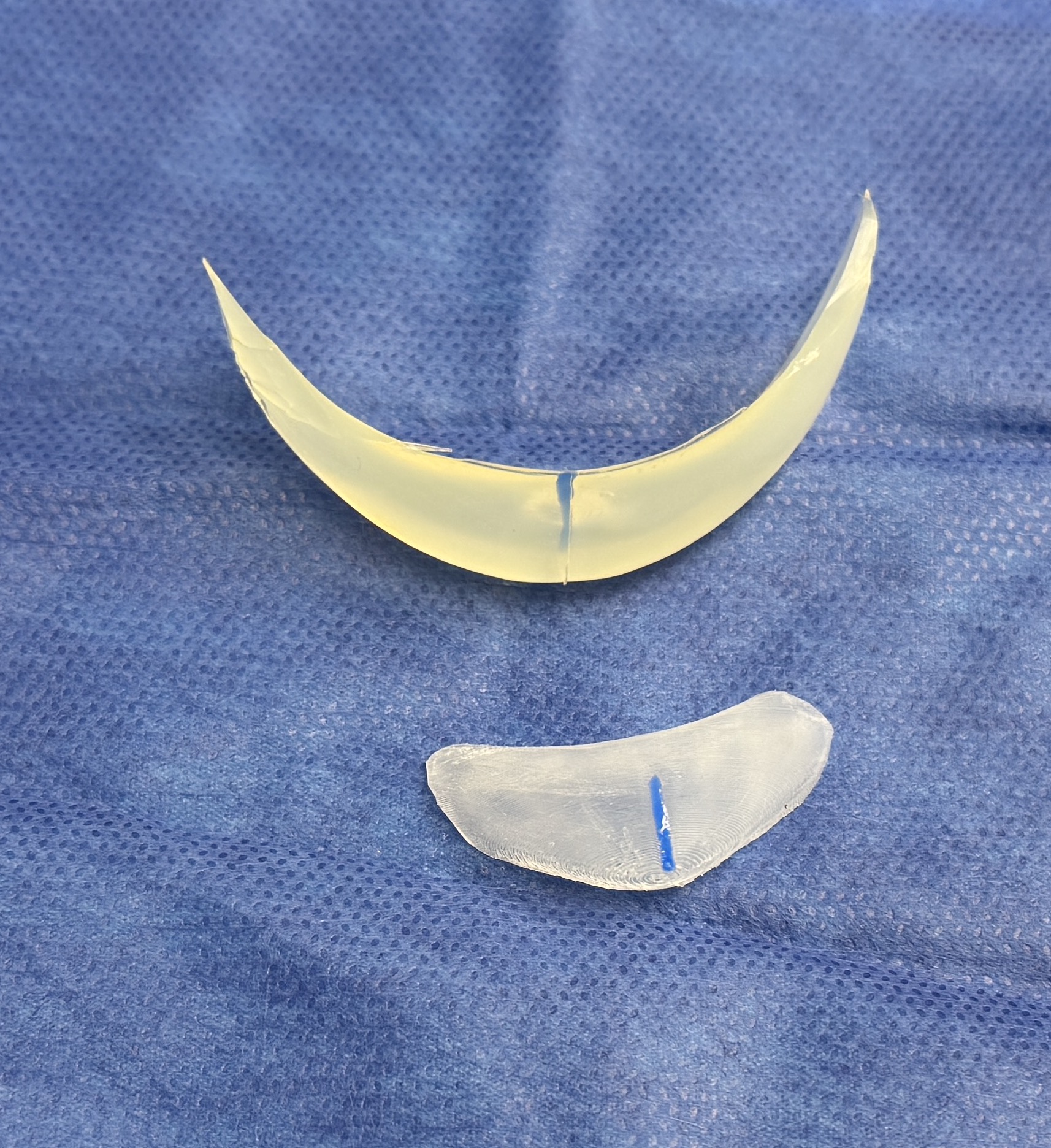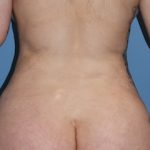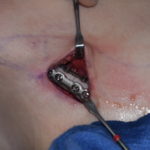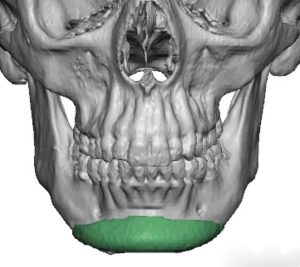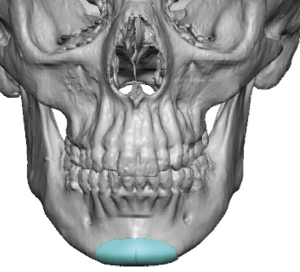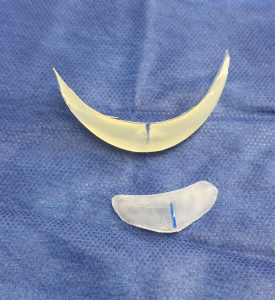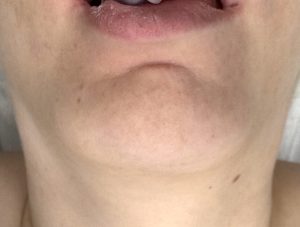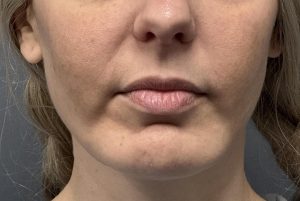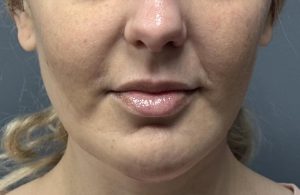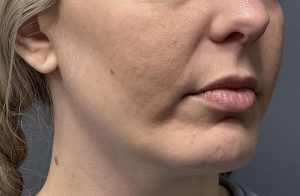Background: It is no surprise that there may be different chin augmentation goals based on the patient’s gender. But if you look at almost every chin implant that has ever been manufactured you would assume that chin augmentation must be gender neutral. They all look fairly similar from the standpoint that most have wings or lateral extensions ostensibly so that they blend into the sides of the chin and jawline (extended anatomic style). Only one non-extended chin implant style exists (anatomic style) which used to be called the ‘button’ chin implant.
While the extended anatomic chin implant may work for a lot of man that want a wider chin shape it often does not work well for females. Many females when seeking chin augmentation do not want a chin that is wider or broader from the front view, a facial dimension that many surgeons unfortunately over look. Too much focus of chin augmentation is on the horizontal or side profile effects. More thought needs to be put into it’s three dimensional effects.
While the original button chin implant may seem to be only of historical relevance it still has a role today. In its modern form the anatomic implant does resemble the old button implant but it still creates a wide and non-tapered chin shape. Even without the wings the anatomic implant is still broad just in a reduced form. A tapered chin shape requires an implant that has as distinct V shape.
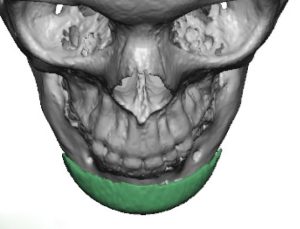
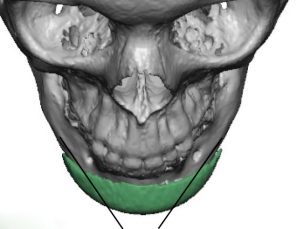
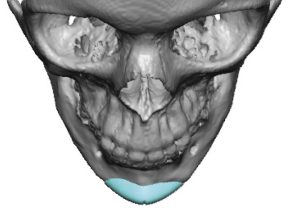
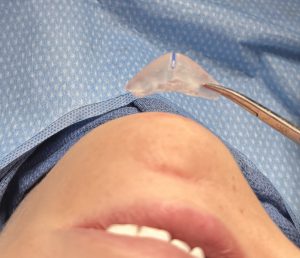

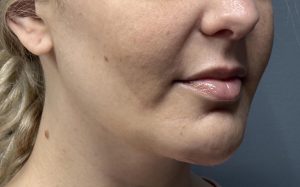
Creating a more tapered chin augmentation effect by an implant cannot be effectively done by any available off-the-shelf options. The key to achieving such a tapered affect requires an exaggerated V shape implant. This is because the thickness of the overlying chin pad blunts the effect of the implant shape. If the patient wants a V shape the implant must literally look like a V.
Key Points
1) The most common error in female chin implant augmentation is choosing an implant that is too wide.
2) Most females usually wanted a narrow chin shape that is not overly projected.
3) There is no standard chin implant that will work for most females. A standard chin implant either has to be modified or a custom chin implant design done to achieve a tapered chin shape.
Dr. Barry Eppley
World-Renowned Plastic Surgeon

